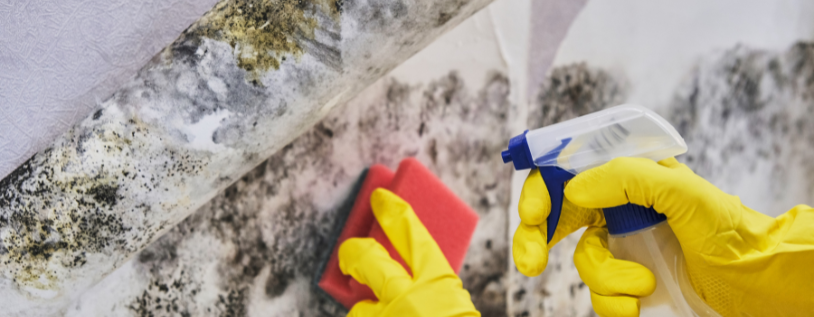Mold in the attic is not just an unsightly nuisance; it’s a health hazard and a sign of underlying moisture problems in your home. Whether due to poor ventilation, roof leaks, or condensation, mold growth can compromise the structural integrity of your attic and affect the indoor air quality, leading to potential health risks for the occupants. Addressing mold in the attic promptly and effectively is crucial to maintaining a safe and healthy living environment.
Why Mold Forms in Attics
Mold growth in attics is primarily due to three factors: moisture, lack of ventilation, and food sources (like wood). Moisture can come from roof leaks, condensation, or improperly vented bathrooms and kitchens. Without adequate ventilation, the attic becomes a prime location for mold spores to settle and grow.
- Ventilation Issues: A well-ventilated attic allows for the exchange of indoor and outdoor air, which helps to keep the attic dry and reduces the likelihood of mold growth. Blocked or insufficient ventilation is a common problem that traps moist air inside the attic, creating a perfect environment for mold.
- Roof Leaks: Even small leaks can provide enough moisture for mold to thrive. It’s essential to regularly inspect the roof for damage and ensure all seals and flashing are intact.
- Condensation: In colder climates, condensation can form when warm air from the living spaces below meets the cold surfaces of the attic, leading to moisture accumulation and, subsequently, mold growth.
Identifying Mold in Your Attic
Detecting mold early can save you time and money in the long run. Look for visible signs of mold growth, such as black, green, or white patches on the wood surfaces, insulation, or walls. A musty smell is also a strong indicator of mold presence. Inaccessible or hidden areas may require a professional mold inspection to uncover unseen mold growth.
Health Risks Associated with Attic Mold
Mold exposure, particularly from attic mold, can lead to a variety of health complications, impacting individuals differently based on their sensitivity and exposure duration. For those with allergies, asthma, or compromised immune systems, the effects can be more severe and immediate, but even healthy individuals are at risk over time. Common symptoms include:
- Respiratory problems: Difficulty breathing, wheezing, and coughing can be exacerbated in those with pre-existing conditions like asthma and can develop in those without prior respiratory issues.
- Throat irritation and nasal stuffiness: Mold spores can irritate the mucous membranes of the throat and nose, leading to discomfort and congestion.
- Eye irritation: Mold exposure can cause red, itchy, and watery eyes, similar to allergy symptoms.
- Skin irritation: Direct contact with mold can lead to rashes, itching, and other skin irritations.

Preparation for Mold Removal
Successfully removing mold from your attic requires careful preparation to ensure the safety of all involved and to prevent the spread of mold spores to other parts of your home. Key steps include:
Wearing Protective Gear
Essential personal protective equipment (PPE) includes N-95 respirators to filter out mold spores, gloves to protect your hands from harsh cleaning chemicals and mold exposure, and goggles to shield your eyes.
Ensuring Adequate Ventilation
Open windows and use fans to increase airflow in the attic and throughout your home. This helps to reduce the concentration of mold spores in the air as you disturb them during cleaning.
Sealing off the Work Area
Use plastic sheeting and tape to isolate the attic from the rest of the house. This containment prevents mold spores from spreading to other areas during the removal process.
Using the Right Cleaning Agents
Depending on the surface and extent of mold, you may need different cleaning solutions. For non-porous surfaces, a mixture of water and detergent may suffice, while porous surfaces may require specialized mold remediation products.
Safe Disposal
Bag and seal mold-contaminated materials properly before removing them from the attic to avoid contaminating other areas.
Taking these preparatory steps seriously can protect you and your family from mold exposure and ensure a more effective mold removal process. Remember, for extensive mold problems, it’s wise to consult with professional mold remediation services to safely and effectively address the issue.
DIY Mold Removal Methods
For small, manageable areas of mold, DIY methods can be effective. Here are some safe and efficient ways to clean mold:
- Vinegar: Spray undiluted white vinegar on the moldy surface, let it sit for an hour, then wipe clean. Vinegar is a mild acid that can kill most mold species.
- Baking Soda: Mix baking soda with water to form a paste, apply to the moldy area, let it dry, then scrub off with a brush. Baking soda is a natural disinfectant and deodorizer.
- Hydrogen Peroxide: Apply 3% hydrogen peroxide to the mold, let it sit for 10 minutes, then scrub and wipe clean. Hydrogen peroxide is an effective antifungal and antibacterial agent.
For extensive mold infestations or if the mold returns after DIY removal, it’s best to consult with a professional mold remediation service to address the problem thoroughly and prevent future growth.
Conclusion
Tackling attic mold is a task that demands immediate attention to protect both your home’s integrity and your health. While DIY solutions may offer a temporary fix, they often fall short in addressing the root cause of mold growth. For a comprehensive and lasting solution, professional remediation services, like those offered by First & Last Restoration, are essential. Their expertise in identifying, removing, and preventing mold can ensure your attic remains mold-free, safeguarding your living environment.


















